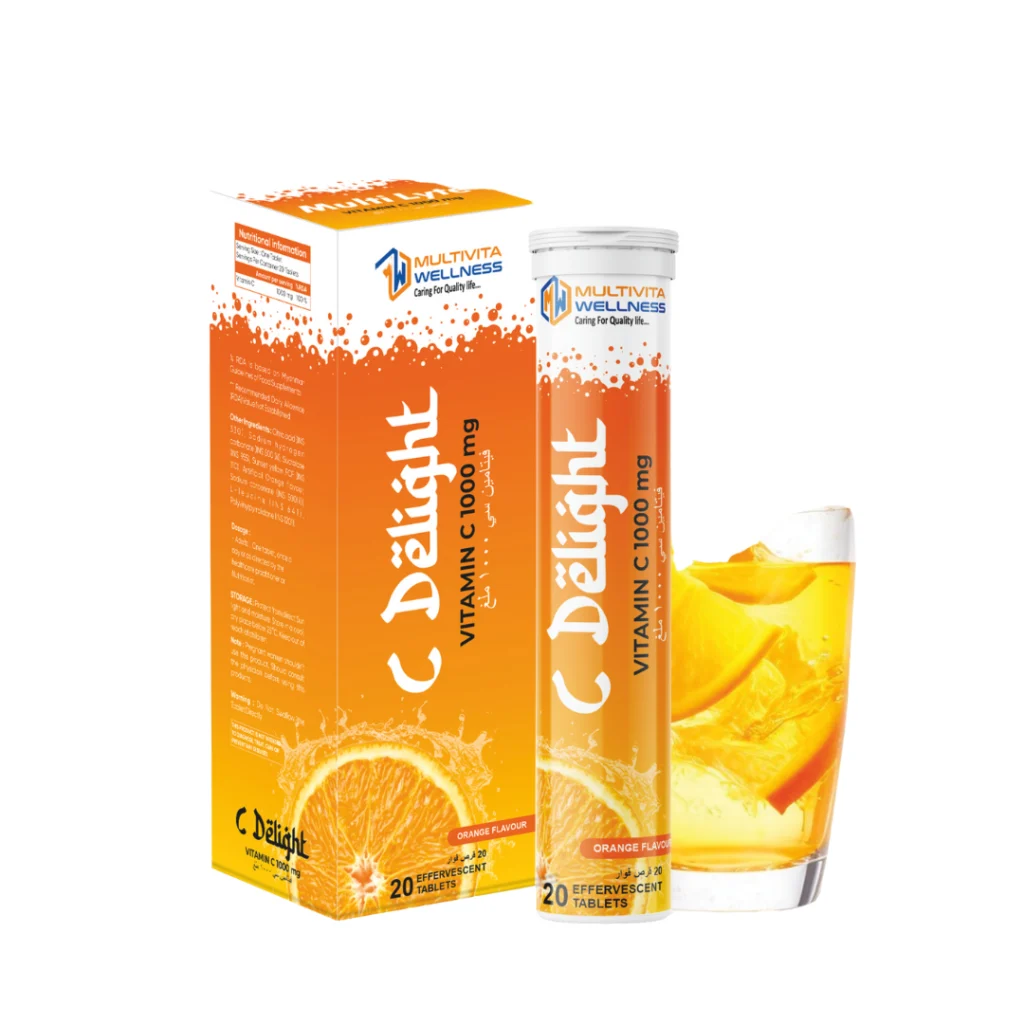Vitamin C is one of the safest and most effective nutrients. Though it may not cure the common cold, the benefits of vitamin C may include protection against immune system deficiencies, cardiovascular disease, prenatal health problems, eye disease, and even skin wrinkling. The tolerable upper intake level (or the maximum amount you can take in a day that likely won’t cause harm) is 2,000 milligrams (mg) daily for adults.
A study published in Seminars in Preventive and Alternative Medicine that looked at over 100 studies over 10 years revealed a growing list of possible benefits of vitamin C.
“Vitamin C has received a great deal of attention, and with good reason. Higher blood levels of vitamin C may be the ideal nutrition marker for overall health,” says study researcher Mark Moyad, MD, MPH, of the University of Michigan. “The more we study vitamin C, the better our understanding of how diverse it is in protecting our health, from cardiovascular, cancer, stroke, eye health [and] immunity to living longer.”
“But,” Moyad notes, “the ideal dosage may be higher than the recommended dietary allowance.”
How Much Vitamin C Is Enough?
“The safe upper limit for vitamin C is 2,000 milligrams a day, and there is a great track record with strong evidence that taking 500 milligrams daily is safe,” Moyad says.
But keep in mind that while many people may not always get the optimal level of vitamin C, having a vitamin C deficiency is very rare in the United Arab Emirates. and many other countries. Vitamin C deficiency is mainly seen in malnourished adults. In extreme cases, it can lead to scurvy — characterized by weakness, anemia, bruising, bleeding, and loose teeth.
Moyad says there is no real downside to taking a 500-milligram supplement, except that some types may irritate the stomach. That’s why he recommends taking a non-acidic, buffered form of the vitamin.
Food is the best way to get all your nutrients. Along with vitamin C, you’ll get other vitamins minerals, and fiber if you’re eating fruits, vegetables, or other produce.
A cup of orange juice or use Vitamin C Tablet would be enough to meet your recommended daily intake of vitamin C. To reach 500 milligrams (mg)
Vitamin C’s Role in the Body
Vitamin C, also known as ascorbic acid, is necessary for the growth, development, and repair of all body tissues. It’s involved in many body functions, including the formation of collagen, the absorption of iron, the proper functioning of the immune system, wound healing, and the maintenance of cartilage, bones, and teeth.
Vitamin C is one of many antioxidants that can protect against damage caused by harmful molecules called free radicals, as well as toxic chemicals and pollutants like cigarette smoke. Free radicals can build up and contribute to the development of health conditions such as cancer, heart disease, and arthritis.
The body doesn’t store vitamin C, so overdose is not a concern. But it’s still important not to exceed the safe upper limit of 2,000 milligrams a day to avoid stomach upset and diarrhea.
Vitamin C is one of the “water-soluble” vitamins. Because your body doesn’t store them, you need to keep them in your diet all the time to maintain healthy levels. Eat raw vitamin-C-rich fruits and vegetables, or cook them with minimal water so you don’t lose some water-soluble vitamins in the cooking water.
Vitamin C is easily absorbed in food and pill form, and when eaten together, it can enhance the absorption of iron.
The Health Benefits of Vitamin C
No one vitamin can override serious health problems. They often work together – and other lifestyle habits – like getting enough sleep and exercise, and not smoking – are key. That said, research shows that vitamin C may offer health benefits in these areas:
- Stress. A deficiency in vitamin C is associated with many stress-related diseases. It is the first nutrient to be depleted in people who drink too much alcohol, smoke, or have obesity. And because vitamin C is one of the nutrients sensitive to stress, Moyad says maintaining levels of vitamin C can be an ideal marker for overall health.
- Colds. When it comes to the common cold, vitamin C is not a cure, but some studies show that it may help prevent more serious complications. “There is good evidence taking vitamin C for colds and flu can reduce the risk of developing further complications, such as pneumonia and lung infections,” says Moyad.
- Stroke. Although research has been conflicting, one study in the American Journal of Clinical Nutrition found that those with the highest concentrations of vitamin C in their blood were associated with 42% lower stroke risk than those with the lowest concentrations. The reasons for this are not completely clear. But what is clear is that people who eat plenty of fruits and vegetables have higher blood levels of vitamin C.
“People who consume more fruit and vegetables will not only have higher [blood] levels of vitamin C, but higher intake of other nutrients potentially beneficial to health, such as fiber and other vitamins and minerals,” study researcher Phyo K. Myint said in an email interview.
- Skin Aging. Vitamin C affects cells on the inside and outside of the body and its antioxidant properties can be beneficial when it comes to aging. A study published in the American Journal of Clinical Nutrition examined links between nutrient intakes and skin aging in 4,025 women aged 40-74. It found that higher vitamin C intakes were associated with a lower likelihood of a wrinkled appearance, dryness of the skin, and a better skin-aging appearance. In addition, topical treatments with Vitamin C have been shown in some studies to reduce wrinkles
Other studies have suggested that vitamin C may also play a role in:
Improving macular degeneration.
Reducing inflammation.
Lowering the risk of cancer and cardiovascular disease.
How to Get More Vitamin C in Your Diet
You’ll get vitamin C from many fruits and vegetables and tablet form.
Citrus fruits, green peppers, strawberries, tomatoes, broccoli, white potatoes, and sweet potatoes are the richest foods in vitamin C.
Other good sources include dark leafy greens, cantaloupe, papaya, mango, watermelon, brussels sprouts, cauliflower, cabbage, red peppers, raspberries, blueberries, winter squash, and pineapples.
Take a daily multivitamin, because most people don’t get enough of several nutrients. And to curb colds and flu, don’t forget to wash your hands often.
SOURCES:
Phyo K. Myint, MRCP, department of public health, University of Cambridge, England.
Dee Sandquist, MS, RD, director, Center for Weight Management, Southwest Washington Medical Center; spokeswoman, American Dietetic Association.
U.S. Department of Agriculture 2005 US Dietary Guidelines. Seminars in Preventive and Alternative Medicine (1) Sept, 24, 2007; 3-1; pp 25-35).
Myint, P.K., American Journal of Clinical Nutrition, January 2008; vol 87: pp 64-69.
American Journal of Public Health, May 2004; vol 94: pp 870-875.
Jeffrey S Hampl, PhD, RD; Christopher A. Taylor, PhD, RD; and Carol S. Johnston, PhD, RD, Vitamin C Deficiency and Depletion in the United States: The Third National Health and Nutrition Examination Survey, 1988 to 1994.
American Journal of Clinical Nutrition, October 2020
Vitamin C in Dermatology, Indian Dermatol Online J. 2013 Apr-Jun; 4(2): 143–146.
Bettina Moritz, Ariana E.Schmitz, Ana Lúcia S.Rodrigues, Alcir L.Dafre, Mauricio P.Cunha, “The role of vitamin C in stress-related disorders,” The Journal of Nutritional Biochemistry, Volume 85, November 2020, 108459
American Heart Association: Fruits and Vegetables Serving Sizes Infographic





